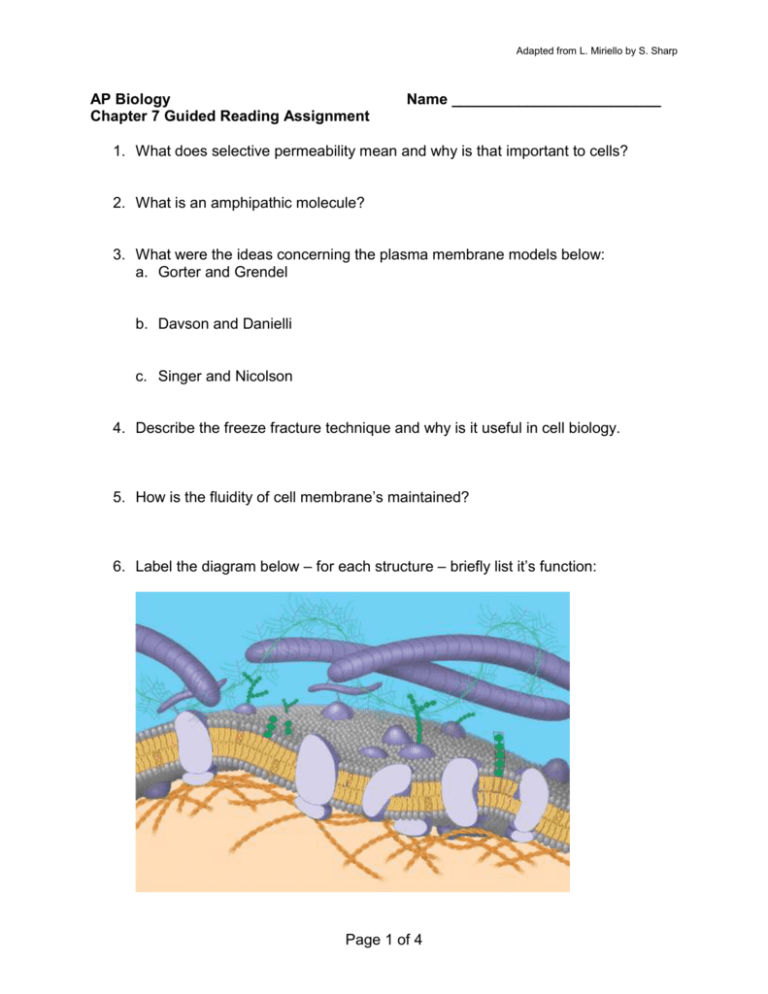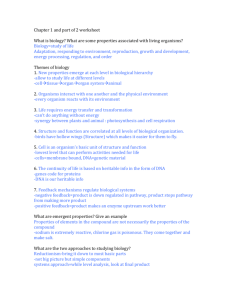Chapter 7 Guided Reading
advertisement

Adapted from L. Miriello by S. Sharp AP Biology Chapter 7 Guided Reading Assignment Name _________________________ 1. What does selective permeability mean and why is that important to cells? 2. What is an amphipathic molecule? 3. What were the ideas concerning the plasma membrane models below: a. Gorter and Grendel b. Davson and Danielli c. Singer and Nicolson 4. Describe the freeze fracture technique and why is it useful in cell biology. 5. How is the fluidity of cell membrane’s maintained? 6. Label the diagram below – for each structure – briefly list it’s function: Page 1 of 4 Adapted from L. Miriello by S. Sharp 7. List the six broad functions of membrane proteins. 8. How do glycolipids and glycoproteins help in cell to cell recognition? 9. Why is membrane sidedness an important concept in cell biology? 10. How has our understanding of membrane permeability changed since the discovery of aquaporins? 11. What is diffusion and how does a concentration gradient relate to passive transport? 12. Why is free water concentration the “driving” force in osmosis? 13. Why is water balance different for cells that have walls as compared to cells without walls? Page 2 of 4 Adapted from L. Miriello by S. Sharp 14. Label the diagram below: 15. What is the relationship between ion channels, gated channels and facilitated diffusion – write 1 -2 sentences using those terms correctly. 16. How is ATP specifically used in active transport? 17. Define and contrast the following terms: membrane potential, electrochemical gradient, electrogenic pump and proton pump. 18. What is cotransport and why is an advantage in living systems? Page 3 of 4 Adapted from L. Miriello by S. Sharp 19. What is a ligand? 20. Contrast the following terms: phagocytosis, pinocytosis and receptor-mediated endocytosis. Page 4 of 4











